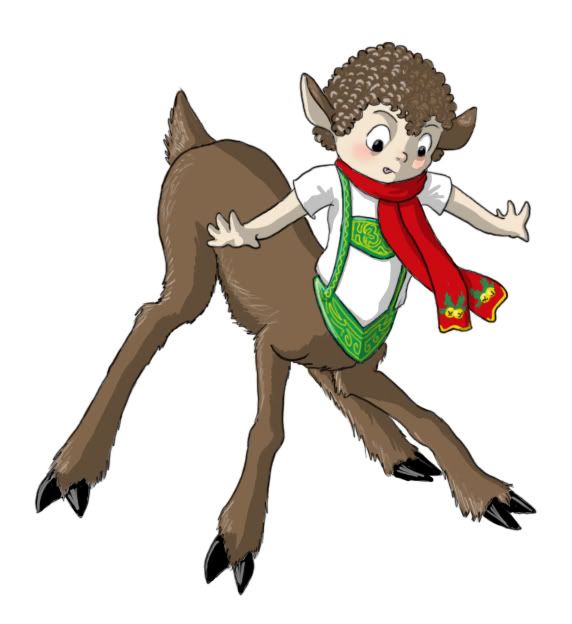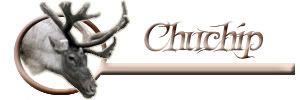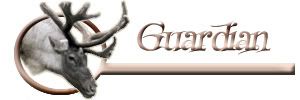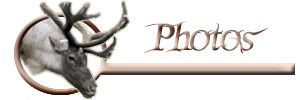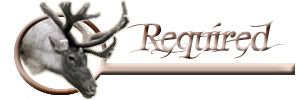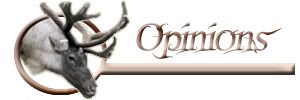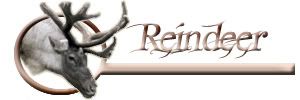 Scientific classification Kingdom:
Scientific classification Kingdom: Animalia
Phylum: Chordata
Class: Mammalia
Order: Artiodactyla
Family: Cervidae
Subfamily: Odocoileinae
Genus: RangiferSpecies: R. tarandusNote: The reindeer, known as caribou when wild in North America, is an Arctic and Subarctic-dwelling deer (
Rangifer tarandus).
HabitatDomesticated reindeer are mostly found in northern Scandinavia and Russia, and wild reindeer are mostly found in Norway, North America, Greenland and Iceland (where they were introduced by humans in the 18th century). The last wild reindeer in Europe are found in portions of southern Norway. The southern boundary of the species' natural range is approximately at 62° north latitude.
A few reindeer from Norway were introduced to the South Atlantic island of South Georgia in the beginning of the 20th century. Today there are two distinct herds still thriving there, permanently separated by glaciers. Their total numbers are no more than a few thousand. (The flag and the coat of arms of the territory contain an image of a reindeer.)
AnatomyThe weight of a female varies between 60 and 170 kg (132 - 375 lb). In some subspecies of reindeer, the male is slightly larger; in others, the male can weigh up to 300 kg (661 lb). Both sexes grow antlers,[1] which (in the Scandinavian variety) for old males fall off in December, for young males in the early spring, and for females, summer. The antlers typically have two separate groups of points (see image), a lower and upper. Domesticated reindeer are shorter-legged and heavier than their wild counterparts. The caribou of North America can run at speeds up to 80 km/h (50 mph) and may travel 5,000 km (3,000 mi) in a year.
Reindeer are ruminants, having a four-chambered stomach. They mainly eat lichens in winter, especially reindeer moss. However, they also eat the leaves of willows and birches, as well as sedges and grasses. There is some evidence to suggest that on occasion they will also feed on lemmings[2], arctic char, and bird eggs[3]
Reindeer have specialized noses featuring nasal turbinate bones that dramatically increase the surface area within the nostrils. Incoming cold air is warmed by the animal's body heat before entering the lungs, and water is condensed from the expired air and captured before the deer's breath is exhaled, used to moisten dry incoming air and possibly absorbed into the blood through the mucous membranes.
Reindeer hooves adapt to the season: in the summer, when the tundra is soft and wet, the footpads become spongy and provide extra traction. In the winter, the pads shrink and tighten, exposing the rim of the hoof which cuts into the ice and crusted snow to keep the animal from slipping. This also enables them to dig down (an activity known as "cratering")[4][5] through the snow to their favorite food, a lichen known as reindeer moss.
The reindeer coat has two layers of fur, a dense woolly undercoat and longer-haired overcoat consisting of hollow, air-filled hairs. A caribou or reindeer swims easily and quickly; migrating herds will not hesitate to swim across a large lake or broad river.
EconomyThe reindeer has (or has had) an important economic role for all circumpolar peoples, including the Sami, Nenets, Khants, Evenks, Yukaghirs, Chukchi and Koryaks in Eurasia. It is believed that domestication started between Bronze Age-Iron Age. Siberian deer-owners also use the reindeer to ride on. (Siberian reindeer are larger than their Scandinavian relatives.) For breeders, a single owner may own hundreds or even thousands of animals. The numbers of Russian herders have been drastically reduced since the fall of the Soviet Union. The fur and meat is sold, which is an important source of income. Reindeer were introduced into Alaska near the end of the 19th century; they interbreed with native caribou subspecies there. Reindeer herders on the Seward Peninsula have experienced significant losses to their herds from animals (such as wolves) following the wild caribou during their migrations.
Reindeer meat is popular in the Scandinavian countries. Reindeer meatballs are sold canned. Sautéed reindeer is the best-known dish in Lapland. In Alaska, reindeer sausage is sold locally to supermarkets and grocery stores.
Reindeer antler is powdered and sold as an aphrodisiac, nutritional or medicinal supplement to Asian markets.
HistoryThe first written description of reindeer is in Julius Caesar's Commentarii de Bello Gallico (chapter 6.26) from the 1st century BC. Here, it is described:
There is an ox shaped like a stag. In the middle of its forehead a single horn grows between its ears, taller and straighter than the animal horns with which we are familiar. At the top this horn spreads out like the palm of a hand or the branches of a tree. The females are of the same form as the males, and their horns are the same shape and size.Subspecies--Woodland Caribou (R. tarandus caribou), or forest caribou, once found in the North American taiga (boreal forest) from Alaska to Newfoundland and Labrador and as far south as New England and Washington. Woodland Caribou have disappeared from most of their original southern range and are considered "threatened" where they remain, with the notable exception of the Migratory Woodland Caribou of northern Quebec and Labrador, Canada. The name of the Cariboo district of central British Columbia relates to their once-large numbers there, but they have almost vanished from that area in the last century. A herd is protected in the Caribou Mountains in Alberta.
--Arctic Reindeer (R. tarandus eogroenlandicus), an extinct subspecies found until 1900 in eastern Greenland.
--Finnish Forest Reindeer (R. tarandus fennicus), found in the wild in only two areas of the Fennoscandia peninsula of Northern Europe, in Finnish/Russian Karelia, and a small population in central south Finland. The Karelia population reaches far into Russia, however, so far that it remains an open question whether reindeer further to the east are R. t. fennicus as well.
--Porcupine caribou or Grant's Caribou (R. tarandus granti) which are found in Alaska, the Yukon and the Northwest Territories of Canada.
--Barren-ground Caribou (R. tarandus groenlandicus), found in Nunavut and the Northwest Territories of Canada and in western Greenland.
--Peary Caribou (R. tarandus pearyi), found in the northern islands of the Nunavut and the Northwest Territories of Canada.
--Svalbard Reindeer (R. tarandus platyrhynchus), found on the Svalbard islands of Norway, is the smallest subspecies of reindeer.
--Mountain/Wild Reindeer (R. tarandus tarandus), found in the Arctic tundra of Eurasia, including the Fennoscandia peninsula of Northern Europe.
--Queen Charlotte Islands Caribou (R. tarandus dawsoni) is an extinct subspecies that had once lived in Graham Island, British Columbia, Canada.
Randoms--The Canadian quarter features a depiction of a Caribou on one face.
--Several Norwegian municipalities have one or more reindeer depicted in their coat-of-arms: Eidfjord, Porsanger, Rendalen, Tromsø, Vadsø and Vågå.
--The historic province of Västerbotten in Sweden has a reindeer in its coat-of-arms. The present Västerbotten County has very different borders and uses the reindeer combined with other symbols in its coat-of-arms. The city of Piteå also has a reindeer.
--The Swedish band The Knife has a song called "Reindeer" which describes the trip of several of these animals accompanying Santa Claus as he delivers Christmas presents.
--The Caribou is the official provincial animal of Newfoundland and Labrador, Canada.
--The de Havilland Canada DHC-4 Caribou was designed as a specialized transport with short takeoff and landing (STOL) capability.
--Caribou is a city in northern Maine.

